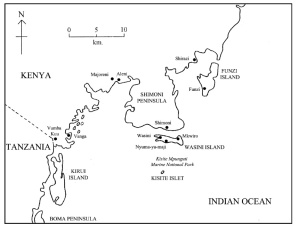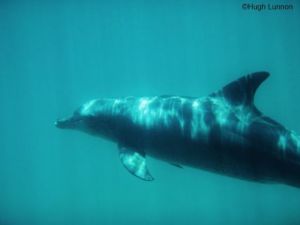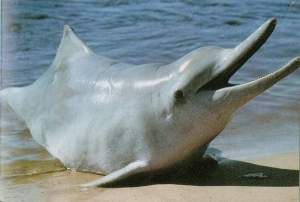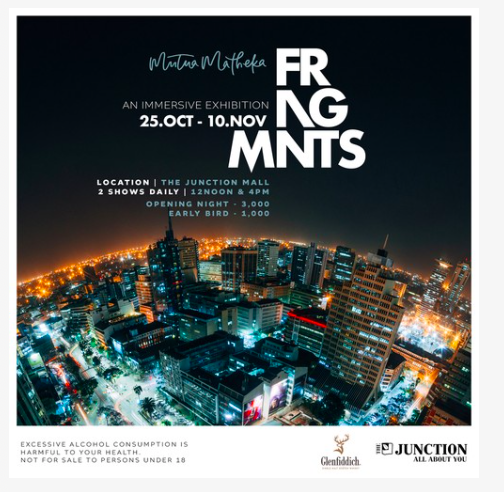If you have 1.3 billion shillings and an interest in the hospitality industry, you can buy prime undeveloped land in the heart of a marine national park, a national reserve listed as a protected site. A Mr. Alessandro Torriani placed an ad offering 53.00 Acres of undeveloped prime land in the Kisite-Mpunguti Marine National Park for Kshs. 1.38 billion ($16, 000, 000).
While KWS has vehemently denied that any private party owns a part of the protected marine park, the ad is still online and the seller has indicated that there are already interested Chinese investors (Yes, our new BFFs). Kisite-Mpunguti is actually a complex covers Kisite, Mpunguti ya Juu and Mpunguti ya Chini islands sorrounded by an elaborate coral reef and abundant with marine life. Kisite is 11 square kilometers, the Mpunguti reserve is 28 square kilometers. The marine national park was created in 1973, the boundaries re-demarcated and shifted outwards in 1976 before being gazetted in 1977.
 To see the beauty of the Park, see Mutua Matheka’s excursion on the islands.
To see the beauty of the Park, see Mutua Matheka’s excursion on the islands.
“As we swam by, the fish would pause in a state of momentary curiosity before going on their duties. Sometimes if you stayed still for long enough, they would swim next to you as if initiating you into their world.”
Kisite-Mpunguti is abundant with marine life,
- 250-recorded fish species including sea grass, gastropods, whales, sea turtles and dolphins.
- The complex’s reef offers a safe sanctuary to over 200 dolphins.
- 40-50 species of coral.
- Kisite-Mpunguti is a nesting point for crab-plovers and roseate terns migrating from Europe.
- The Coconut Crab is the largest living anthropod in the world and can be found in the Lower Mpunguti Island.
- In this expedition in 2010 there were over 500 fish spottings a day and less than 5 in the neighbouring Wasini channel where fishing is allowed.
- During some seasons in the year, whale sharks and humpback whales have been sighted swimming by Kisite on their migrations north and south.
- The green turtles had all but disappeared from KMMPA until 2009 when turtle were spotted in the Lower Mpunguti area. Green turtles have a lifespan of 45-59 years with only six nests for the female -each with 330 eggs, and 1900-2300 total eggs during her lifetime.
When did we lose it?
In 1994, and 1997.
The plots currently on offer are referred to in the Ndung’u Land Report (file size 11.3MB), page 161. KMNP was alloted to Sophi Rahim, and a Sophie Nzuguka Kilei and later transferred to M/S Panco Ltd.
MMNR was alloted as Kwale/Shimoni/293/94/95 to among others, Boy Juma Boy, Senator-Elect for Kwale County (Because we are Kenya, and our threshold for leadership is only that the candidate has the right pedigree and a pulse).
They later sold the land to four different companies all owned by the same guy, Allessandro Torriani, who now argues that he acquired the land legally and can thus dispose of it (Its not land grabbing if you buy it from the land grabbers now is it? ..is the logic here). There is a disconnect, of course, in that KWS wrote the letter that allowed for the original allotment and the transfer in 1997, but now denies any role in it.
Ndung’u commission recommended the revokation of the title deeds but the document was never (officially) released or the recommendations acted upon, the transfer of land to a new owner went unnoticed [sic!] until he tried to sell it.
Kisite-Mpunguti Marine Park suffers from an inherent weakness in MPA management; that economic activities such as their sale that lead to their eventual degradation are seen as being more desirable.
Most macroeconomic and sectoral planners, even while recognizing the key role that tourism plays in Kenya’s economy still view Marine Parks as having low and negligible value to the economy. This explains, in part at least, why the sale has received such little attention outside conservation. Even KWS, the body under whose jurisdiction the park falls does not seem to fully appreciate the real economic value of marine parks.
- “In 1998 just under 30,000 paying visitors entered the marine protected area complex, paying an entry fee of US$5, and generating over US$ 131,000 revenues for KWS”
- “Excluding park entry fees, the total earnings from the 29,227 adult tourists who entered KMNP/MMNR in 1998 was in excess of US$ 1.6 million, calculated as the product of visitor numbers and trip charges (an average of US$ 55).”
- “In 1998 a total of US$ 19,000 was spent on running KMNP/MMNR and maintaining its personnel and infrastructure.”
- Only about 15% being reinvested into the park.
A study in 2009 focusing on the management of the resource and found that 50% and 12% depend on the complex for fishing and tourism (employment) respectively.
Another study, related to marine conservation and revenue sharing notes “…families whose livelihoods are highly dependent on the MPA had a higher income and food security than families that only depended on fishing and agriculture…”. Groups such as Mkwiro and Wasini Women Groups sprung up as a bid to take advantage of the tourist flow into the islands.
Kisite-Mpunguti is not just about land, it is also about placing national heritage, economic potential and biodiversity in the hands of private developers. Granted, the KWS of 2013 is not the KWS of 1997, and we have an advantage of accessing such information now.
While we can continue to curse Moi and his cronies for our current land woes, we have a chance to make a change and stop an illegality….oh, and it is also about mating turtles.
“Mating can be a risky business for female green turtles as the males (sometimes more than one at a time) can prevent the female from coming up for air during sex and cause her to drown. Female sea turtles can store sperm from one or more males in their oviducts and all of the eggs can then be fertilized in the same season without repeated mating!”
WHAT CAN YOU DO?
Sign the petition, drive debate on the protection of Protected (sic!) sites, and demand that the (next, this one is a lost cause) government implement the Ndung’u report.
Owaahh
Africa conservation Insanity Kenya Kisite Kisite-Mpunguti Land Mating turtles Ndung'u Report Political economy politics
Last modified: February 3, 2020




















